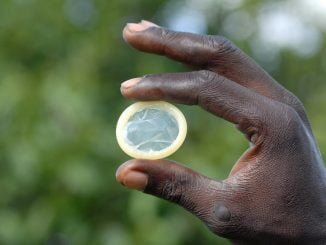
Kampala, Uganda |URN | The Ministry of Health- Uganda has launched the first-ever treatment guidelines for sickle cell disease to standardize the kind of care health workers give patients at specific points of care.
Launched at an event to mark the International Sickle Cell Day on Friday 19th, June 2020 afternoon, Dr Robert Opoka, a paediatrician and senior lecturer at Makerere University said the guidelines mark a new dawn in care as treatment for sickle cell has been erratic with no uniformity but rather depending on individual assessment of health workers.
The launch took place at the National Public Health Laboratories in Butabika.
Until recently, people battling the painful genetic disorder have been getting supportive care whereby they are given pain killers to ease pain, antibiotics for infections and anti-malarial drugs for malaria.
But now, Dr Gerald Mutungi, the Acting Commissioner for Non-Communicable Diseases at the Ministry of Health says they have a comprehensive document that lists what medicines health workers can use in what intervals in addition to at what point one should refer the patient to a higher facility.
In addition to the guidelines, Dr Mutungi revealed it is in final stages of putting fairly new sickle cell drug hydroxyurea which is also used in cancer treatment on the list of essential medicines indicated for patients living with sickle cell.
Currently, this drug can only be accessed by those that are able to pay as each pill goes for about Shs1,500, some patients depending on their level of crisis requires up to three drugs each day.
Alfred Wabulembo, the Country Representative for Novartis, a Swiss pharmaceutical company that got the drug registered among those to treat sickle cell disease said they struck a deal with the Ministry to avail the drug at a subsidized fee and also print treatment guidelines for all health facilities across the country.
He told this publication that even before the Ministry finishes the process of putting it on the essential medicines list, those buying it privately will pay a lower price than the current range of Shs1,500 per tablet.
Read Also: Over 70% using herbal medicine to treat sickle cell disease – Research
In addition to the drugs, he said their partnership with the Ministry also involves diagnosis to ensure that more people test to know their status in addition to creating awareness in communities to embrace screening interventions.
In Uganda, it is estimated that about 20,000 babies are born with sickle cell every year but 80 percent of them never live to see their 5th birthday. Also, about 11,000 children under 5 years die as a result of the sickle cell every year. This translates to between 30 babies dying every day as a result of the disease.
This statistic experts say can only be reversed if carriers of the disease don’t marry each other something they will establish with screening. Treatments like hydroxyurea will only offer a better standard of living for a sickler but not complete cure.



